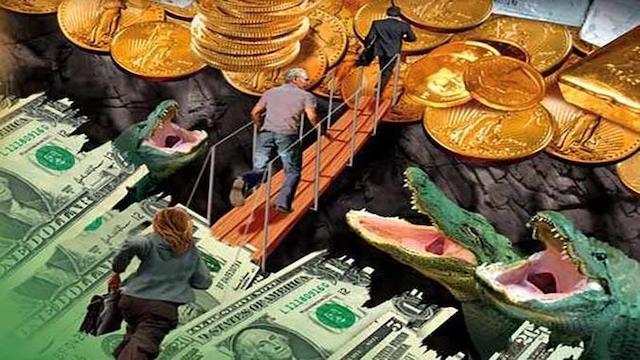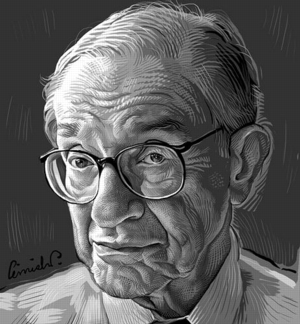 I remember where I was the first time I heard about gold. I was in my 1995 Toyota Tercel in downtown San Francisco, listening to the radio. Usually I listened to the Razor and Mr. T on KNBR 680, but for some reason I had the news on. The announcer mentioned that gold was up that day, to $265 an ounce…
I remember where I was the first time I heard about gold. I was in my 1995 Toyota Tercel in downtown San Francisco, listening to the radio. Usually I listened to the Razor and Mr. T on KNBR 680, but for some reason I had the news on. The announcer mentioned that gold was up that day, to $265 an ounce…
It wasn’t a white light moment. And gold didn’t seem exceptionally cheap to me. $265 an ounce seemed like a lot. But if I’d known anything at all about the price history, I might have had a different opinion.
I didn’t think about gold much when I got to Lehman Brothers in 2001, either. I was getting a job in equities. All the jobs were in equities or fixed income. I didn’t even know that Lehman Brothers had a commodities desk, and even if I did, nobody would have thought about getting a job there.

Alan Greenspan
Around this time I was reading a lot of Ayn Rand stuff, and I kept coming back to Alan Greenspan’s 1966 essay titled “Gold and Economic Freedom.” I probably read it a hundred times and even memorized parts of it. The takeaway was that if the government had too much debt, it would be compelled to print money to buy the debt to keep interest rates down.
The year was 2005 – we were still three years away from quantitative easing, although it was already a twinkle in Bernanke’s eye.
That was about the first time that I thought of gold as an investment. And coincidentally, that was the time that some folks from State Street and the World Gold Council came by the office to sign us up as Authorized Participants for the new gold ETF, GLD.
To this day, GLD remains a very important financial innovation – subsequent attempts to securitize commodities have led issuers to create products in ETN form that tracked or held futures contracts, introducing basis and roll risk into the equation.
GLD is simple – it holds physical gold. A few years later, there would be some arguments about “paper gold” and unallocated versus allocated gold. But GLD is still trucking to this day, and it’s the most liquid and practical way to buy large quantities of gold.
Of course, when Bernanke actually did launch quantitative easing, gold got really popular, along with something called CMS caps, which was basically a structured call option on interest rates. People thought there would be lots of inflation, and if you read Greenspan’s “Gold and Economic Freedom” essay, you might be led to believe that.
Gold worked, but the CMS caps didn’t, as bond yields actually went lower. Of course, the feared inflation never materialized. But as far as trades go, the gold trade was a pretty good one, and it worked based on the fear of inflation, not actual inflation.
After the last eight years in purgatory, gold is starting to work again. The technicians are saying that it broke out. This is where things get complicated. Why does one buy gold?
Is it as an inflation hedge?
Is it because of political risk or geopolitical risk?
Is it because of deficits?
Is it because of stupid monetary policy?
It is kind of a confluence of all these things:
* Inflation trades have started to work in the last month or so
* The election is going to be bananas, and now there is tension in the Middle East
* The deficit problem seems to be intractable, and people are talking about MMT
* Powell is widely seen as caving to Trump’s demands
Which means it should be a pretty good environment for gold.
You don’t need gold if you believe that the Federal Reserve will be a good steward of purchasing power. That looks less likely under this administration or any subsequent administration. The takeaway:
You don’t need inflation to skyrocket for gold to work-although we should have learned that from the 2009–2011 period.
Am I a gold bug? Maybe, but without the conspiracy theories. I’ve always been pessimistic about the Fed’s ability to control the currency. That pessimism has at times been unwarranted.
Bernie Sanders is essentially tied in Iowa and New Hampshire. The probability of him being president is not zero (in fact, it’s about eleven percent). Try to imagine what a Bernie Sanders Fed would look like, given what we know about his love for MMT. Something tells me that the Sanders Fed would be even less free from political influence than the Trump Fed.
I’m not here to tell scary stories. Some people say that gold outperforms stocks. Some people say that stocks outperform gold. It depends on where you pick your starting point, and people are very dishonest about that.
I will say this: It only takes a small amount of gold to dramatically change the risk characteristics of your portfolio – for the better.
And I don’t think that millennials own a single ounce.
Written by Jared Dillian for Mauldin Economics ~ January 1, 2020
[Got physical… close at hand?]
Let’s do something about that…
 Protecting Your Wealth is heard at 3:00 p.m. (Eastern Time), each Tuesday and Thursday on Republic Broadcasting Network. Jeffrey Bennett, host of the program will be sharing over 60 years of his personal experience in the precious metals markets, in addition to educational commentary regarding YOUR financial health and welfare.
Protecting Your Wealth is heard at 3:00 p.m. (Eastern Time), each Tuesday and Thursday on Republic Broadcasting Network. Jeffrey Bennett, host of the program will be sharing over 60 years of his personal experience in the precious metals markets, in addition to educational commentary regarding YOUR financial health and welfare.
Kettle Moraine, Ltd.
P.O. Box 579
Litchfield Park, AZ 85340
1 – 623 – 327 – 1778
gold@sierramadrepreciousmetals.com









